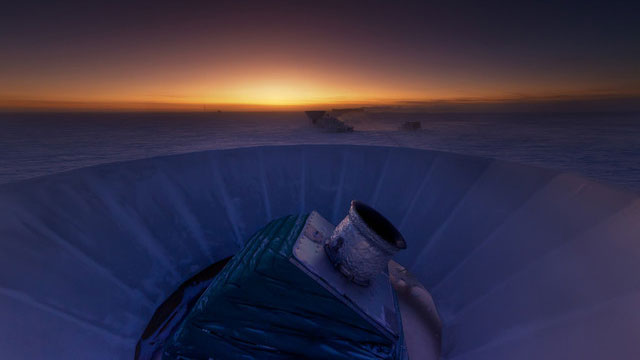What they found — though this has yet to be verified by other scientists — is evidence of gravitational waves, which I’ll let Slate’s Bad Astronomer blog explain:
These are literally small expansions and contractions of space itself, like a wave traveling down a Slinky. We know these exist—we see their effects in astronomy, and two astronomers won a Nobel Prize in 1993 for finding an example of gravitational waves—but seeing them coming from the inflationary period of the Universe is incredibly difficult.
We don’t see the waves themselves, but we can detect the effect they had on light coming from the early Universe.
If you feel like you need more caffeine in order to understand this, may I direct you to this New York Times graphic, which explains inflation and the questions it answers by comparing it to a bunch of cups and a big central pot of coffee. (The article has great context and background, too.)
Inflation is important because it fixes some holes in the Big Bang Theory. Until today, there was a theoretical basis to it, but not observational, as NPR’s 13.7 blog explains:
But inflation was a contentious idea from start. No one had a firm handle on what the universe was like at such a ridiculously early point in time. The densities and temperatures of cosmic matter were so high that its physics could only be drawn in outlines. While inflation cured many problems for cosmologists, it seemed to lots of researchers like wishful thinking written in advanced math.
Today’s announcement fixes that. And it may do more. As the Guardian says, this discovery could also help link quantum mechanics and general relativity:
Despite almost a century of effort, the world’s physicists have not been able to show how these theories work together. The primordial gravitational waves that produced the signal seen by Bicep2 were produced in interactions that took place at a trillion times the energies that can be produced in the Large Hadron Collider at Cern.
“This is like turning the whole universe into a particle physics experiment,” said Hiranya Peiris, a cosmologist from University College London.
BICEP2, which the Guardian article references, is a telescope at the South Pole scientists used to search the cosmic background radiation for the gravitational waves.
